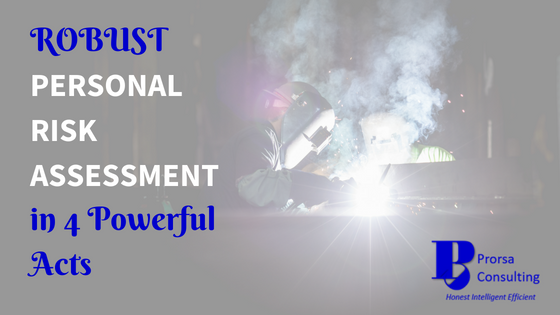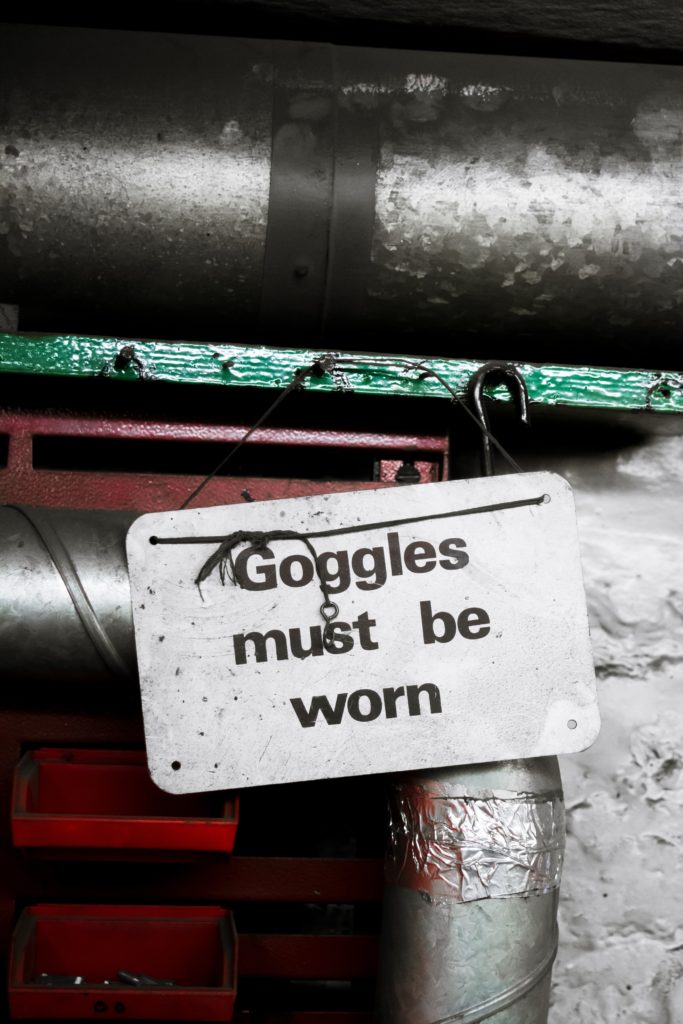Robust Personal Risk Assessment in 4 Powerful Acts
By : Admin -

Disclaimer: Please be aware that this blog post contains affiliate links and any purchases made through such links will result in a small commission for me (at no extra cost for you). Feel free to visit our Disclosure of Material Connection page for more information.
Safety behavior strongly influences the potential for an employee to become injured while completing an assigned task. Besides that, only when workers stay aware of possible safety hazards on a daily basis can they truly mitigate the risks. As such, personal risk assessment serves as one way of promoting increased daily safety awareness.
Personal risk assessment benefits workers by allowing them the opportunity to actively evaluate the work area immediately before beginning a task. Moreover, the assessment is informal and relatively simple, taking only minutes to complete. However, those minutes could make the difference between safe task completion and injury.
Employees only need to perform 4 acts for an effective personal risk assessment. Furthermore, we’ll cover each one in some detail throughout the remainder of this post.
Personal Risk Assessment Act 1: Physically & mentally come to a complete STOP
With the current speed of our everyday lives, we pride ourselves on our ability to multitask. Nevertheless, a personal risk assessment requires the utmost, undivided attention. Thus, all other activities must come to a complete stop in order to begin the assessment.
In the later steps of the evaluation, employees will be looking at potential injury-causing details in the work area. These may include hazards workers have seen on numerous occasions but not noticed. As such, this important first act of a personal risk assessment allows employees to adjust their focus strictly to the assessment at hand.
In addition, the following best practices should be employed when completing Act 1 of a personal risk assessment:
- Come to a complete stop (i.e. no walking, driving, talking, etc.)
- Put away your cell phone
- Take a deep breath to clear & focus your mind before proceeding

Photo Credit: Slip Up by Stevepb on Pixabay.com.
Personal Risk Assessment Act 2: Actively SCAN the work area to identify hazards
The second act of personal risk assessment entails a walking scan of the work area. During this step, employees are looking, hearing, smelling, and feeling for anything that could pose a hazard. Additionally, workers must use multiple senses during this task. A potential hazard could manifest itself in numerous ways, such as:
- a gas leak detected through smell
- a trip hazard caught by the eyes
- possible equipment malfunction heard by the ears
- excessive heat felt through a sense of touch
Nonetheless, workers should have awareness of common potential hazards to watch for like:
- obstructed walkways, stairways, entrances, & exits
- damaged tools & equipment
- suboptimal weather conditions
- barricaded/restricted areas
- missing emergency supplies & equipment
Additionally, you can get ahead of the game on Act 2 of a personal risk assessment with these best practices:
- Use the ABBI (Above, Below, Behind, Inside) technique to look for hazards
- Scan for any circumstance that would cause a deviation from your task’s standard operating procedure or safe work practice
- Include any potential hazards that were covered in that day’s tailgate/team safety meeting in your scan
Personal Risk Assessment Act 3: ASSESS the Risks to Yourself, Others, & Property
Once potential safety hazards have been identified, the time comes to assess the associated risks. When evaluating risk, workers should consider potential adverse effects to themselves, other persons, and property.
Moreover, you may find it helpful to ask the following questions in order to complete Act 3 of the personal risk assessment. Each question should start with “If I did nothing to correct the hazards I identified, . . .”
- Would I have to deviate from the standard operating procedure or safe work practice to get the job done?
- Do I run the risk of being injured?
- Are others at risk for injury?
- Does the chance exist for property damage?
A response of “Yes” to any of the above questions indicates a need for the identified hazards to be eliminated or mitigated. This will reduce the potential for injury or property damage. Furthermore, elimination and mitigation activities take place in the final act of the personal risk assessment.

Photo Credit: Image by Adam Birkett on Unsplash.com.
Personal Risk Assessment Act 4: ADDRESS Identified Hazards to Reduce the Chances for Injury or Property Damage
Last but certainly not least, Act 4 of a personal risk assessment consists of hazard management. In this final stage, workers will select and then implement the controls needed to eliminate or mitigate the hazards they identified. In some circumstances, the fixes will be easy. For others, the hazard correction may entail more in-depth analysis to fully address the hazards.
However, this post covers informal personal risk assessment. As such, employees may follow some simple steps to determine how best to address recognized hazards. Furthermore, asking the questions and following the guidelines below will provide a good blueprint for workers to complete the final act of a personal risk assessment:
- Can I alone safely eliminate the identified hazardous condition(s) without much extra effort?
- If “Yes”, correct the hazardous conditions and proceed with assigned job task.
- If “No”, proceed to the next question.
- Will a completed work order eliminate the identified hazardous condition(s)?
- For a “Yes” response, limit access to the affected area and submit a work order. Moreover, consult your supervisor about work tasks that cannot be safely completed due to hazardous conditions.
- For a “No” response, then proceed to the next question.
- Would additional personal protective equipment (PPE) or a slight change in work practice allow me to work safely under the current conditions?
- If “Yes”, speak with your supervisor to procure additional PPE or approval of work practice modification.
- If “No”, then the identified hazardous conditions warrant a formal risk assessment. Consult your supervisor for further direction.
Resources
Additionally, you can find more information on personal risk assessment at the following places around the web:
- Compliancetrainingonline.com – MSHA’s Make the Right Decision SLAM Risks the SMART Way
- Oshonline.com – Improving Personal Risk Assessments
- Miningsafety.co.za – Making Zero Incidents a Reality Through SLAM
- Healthandsafetyhandbook.com.au – 5 Benefits of Conducting Risk Assessments
- Westernenergy.org – Personal Risk and What Influences Our Safety Decisions
Other Posts You May Find Interesting
Protect Your Hands at Work Before It Even Becomes an Issue
Performing a Job Hazard Analysis: Your Powerful Weapon to Prevent Workplace Injuries
Worker Fatigue Dangers: What’s Your Company’s Plan to Prevent the Worst Outcomes?
Final Thoughts
Remember, the right safety behaviors can help save lives. Every worker should use a personal risk assessment before beginning each job task to heighten their awareness of the safety hazards around them. In addition, personal risk assessment gives workers another positive safety behavior to better protect themselves in the workplace.
Prorsa Consulting can assist with your environmental, health, & safety compliance, training, data analysis, and management system needs. Check out the Services page for more information. Additionally, you may contact us via contact@prorsaconsulting.com with any questions about our services.
Your feedback on this blog’s content is always encouraged. If you found this information useful, be sure to like and/or share below. Also, you can give us your feedback via our Contact Us page. Moreover, you can follow Prorsa Consulting on Google+, LinkedIn, Pinterest, and Twitter.

